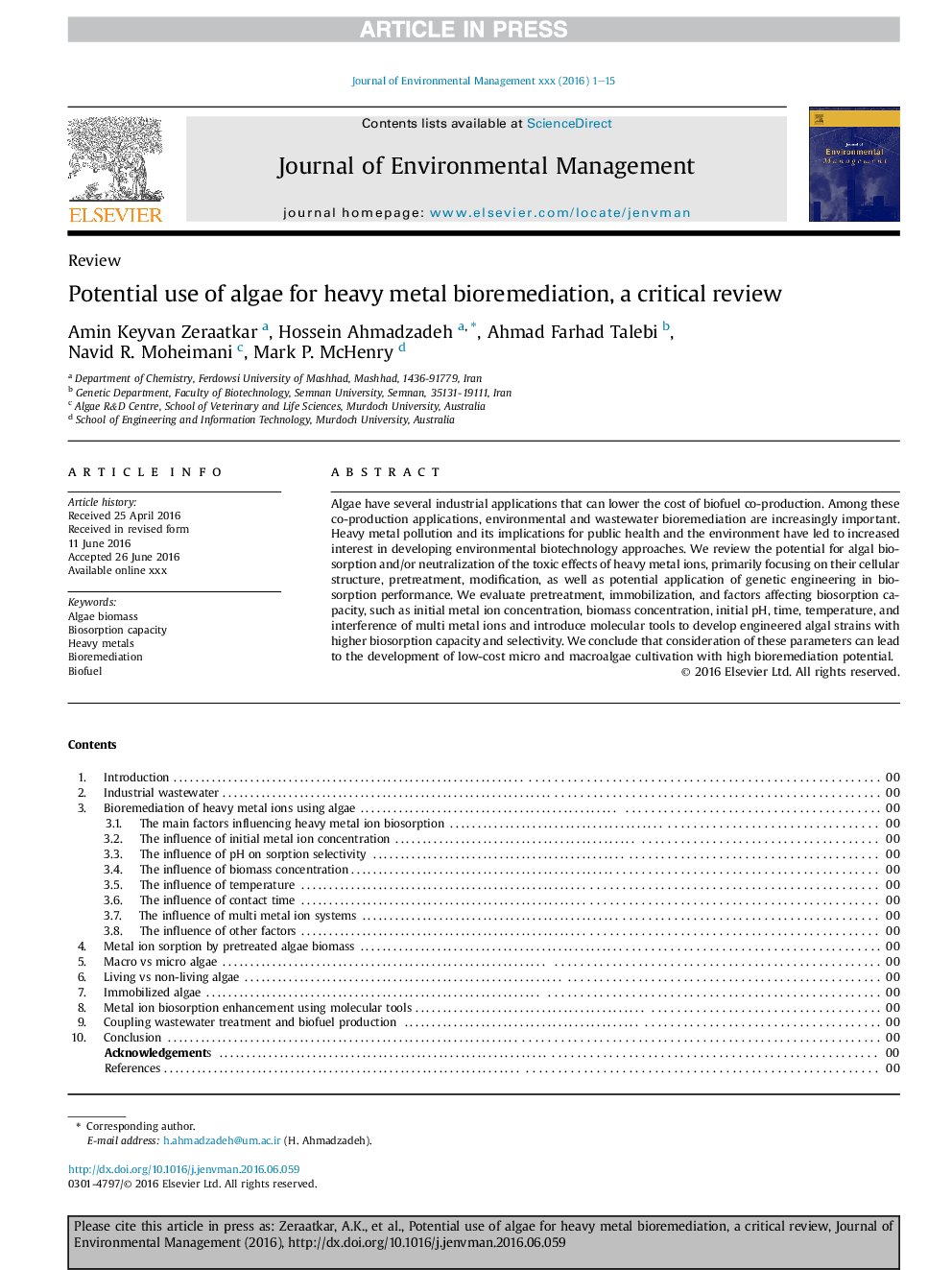| Article ID | Journal | Published Year | Pages | File Type |
|---|---|---|---|---|
| 7479911 | Journal of Environmental Management | 2016 | 15 Pages |
Abstract
Algae have several industrial applications that can lower the cost of biofuel co-production. Among these co-production applications, environmental and wastewater bioremediation are increasingly important. Heavy metal pollution and its implications for public health and the environment have led to increased interest in developing environmental biotechnology approaches. We review the potential for algal biosorption and/or neutralization of the toxic effects of heavy metal ions, primarily focusing on their cellular structure, pretreatment, modification, as well as potential application of genetic engineering in biosorption performance. We evaluate pretreatment, immobilization, and factors affecting biosorption capacity, such as initial metal ion concentration, biomass concentration, initial pH, time, temperature, and interference of multi metal ions and introduce molecular tools to develop engineered algal strains with higher biosorption capacity and selectivity. We conclude that consideration of these parameters can lead to the development of low-cost micro and macroalgae cultivation with high bioremediation potential.
Related Topics
Physical Sciences and Engineering
Energy
Renewable Energy, Sustainability and the Environment
Authors
Amin Keyvan Zeraatkar, Hossein Ahmadzadeh, Ahmad Farhad Talebi, Navid R. Moheimani, Mark P. McHenry,
